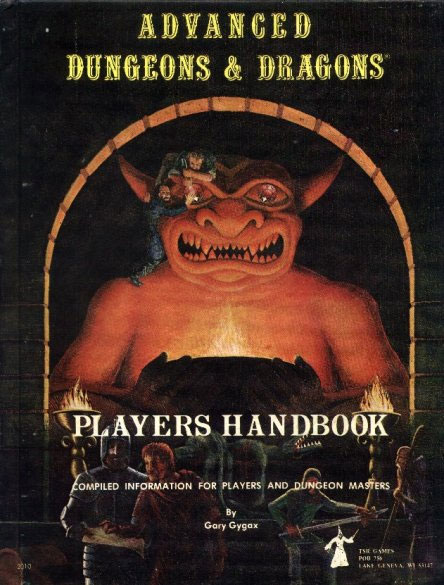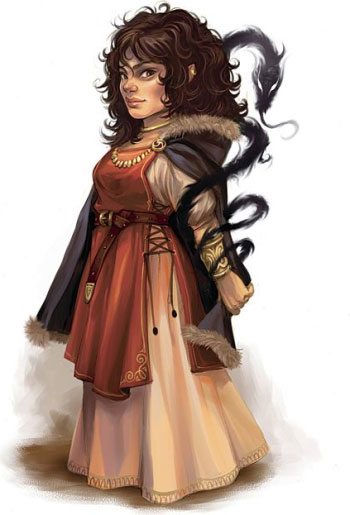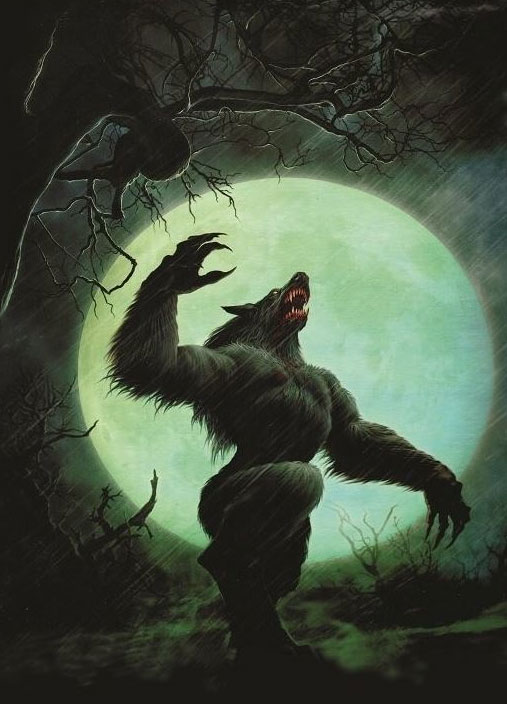House Rules
Introduction
House rules have always been a part of roleplaying for me. While my interest has always been in storytelling (not combat simulation), I am a incorrigible tinkerer when it comes to rules. Now, I have stripped out almost all of the rules-specific content (i.e., stat blocks) from the dungeons and adventure descriptions on this site. This is partially because I have used several RPG game systems over the decades and it would be confusing, but mostly it is because the information doesn't really advance the story line - it merely provides mechanical support around the table.
This page provides a single place for my thoughts on House Rules for our current rule system, Pathfinder.
History of the Rules
1977-2000
While my first adventures were run using the white-boxed set of D&D rules, the introduction of the Player's Handbook in June 1978 shifted our gaming group to AD&D where we stayed for over twenty years. Over time, the new AD&D books declined in quality becoming more formulaic. By the time the Fiend Folio was published in August 1981, I was already creating house rules to handle a dynamic game. In 1988, I published a series of rule books to normalize the AD&D system, extend the character progression to higher levels, and introduce new spells and monsters. When D&D 2nd edition came out in 1989, we already had something better. We still use these expanded AD&D rules at Matcon once a year with the classic campaign.
2000-present
In 2000, I started playing with a group using the newly-released D&D 3.0 rules. I was immediately hooked. After playing in dozens of systems over the years, I had finally found something better than my homegrown AD&D system. The 2003 release of D&D 3.5 continued the upward trend by fixing a few fundamental flaws of the d20 system. In 2008, D&D 4.0 came out. It was terrible. I threw the books away. At that point, I expected to return to creating rules content myself. But in 2009, Paizo released Pathfinder - sort of a D&D version 3.75. It was great - deep, crunchy and well supported. I could focus on storytelling and content, and Paizo would do the rest. We are still playing Pathfinder as the default for campaign-style play.
In 2018, Paizo unveiled Pathfinder Playtest. The new rules do clean up some of the complexities of a rule set that has 28 books published over a decade. But, it also focuses the game on combat simulation and attempts to simplify all the quirkiness of the rules into nice neat compartments. In many ways, my complaints on this system are the same as my complaints about D&D 5th edition - it feels like a sanitized starter game. As a storyteller, neither of these systems get me very excited. I avoid change for change's sake, so my campaigns will continue to use the original Pathfinder. I will re-evaluate the final version of the Pathfinder rules slated for release at Gencon 2019.
It's A Dangerous World Out There
A couple of questions that come up about the Realm whenever a new player hits the table for a long-running campaign. As an amusement, I thought I would jot down my answers.
How dangerous is the Realm? The answer is a hell of lot more dangerous than most D&D and Pathfinder worlds. Why? There are a couple of components to this.
- Not all encounters are level-appropriate. Player characters need to learn when to run away. If it seems like the encounter is too difficult, it probably is. Stay and take your chances or retreat and return to fight another day. As a player, I hate to be railroaded from encounter to encounter - I want to participate in the storytelling, not just be in the audience. If every encounter is perfectly level-appropriate, the decision as to what to do has been taken from me. Meh. As a dungeon master, I try to always allow players to make the decisions - even if they do wander into the bad part of town on occasion.
- As a corollary to this, I don't fudge rolls, monster stats or anything else. That's why I roll dice in front of the players. It's good drama. If there is no chance of dying, then the adventure is boring. This does make the Realm a dangerous place, however.
- My NPCs are better than average. NPCs might be born at first level, but very few remain that way. Yeah, there are children, the town drunk and some slackards who never go anywhere. But, most townsfolk, craftsmen, guards, and the like become proficient at their jobs and protecting themselves - peaking at 4th or 5th level. Now, those who become guild masters, parish priests or captains of the guard might be 10th level. While these two groups represent most of the population (80%/20% split), it is not unheard of to run into a 15th level NPC who is a military commander, high priest, wizard or noble. Those reaching 20th level (and mythic tiers) are rare - mostly adventurers, high kings, archdruids, wizards of the council, and the like. These are the legendary figures that shape the Realm in their images.
How much gold and magic will I get adventuring? Well... here are my thoughts.
- In order for gold to be interesting, character's coins need to be spent on something more fulfilling than piles of potions. I usually have a major project at the center of each campaign - a castle, ship, stronghold, or the like. This provides a meaningful use for coins after characters have outfitted themselves with the basics. Unlike many DMs, I allow characters to roleplay buying basic magic items. In addition, there are a handful of trading posts that have four or five major magic items - with ties to the campaign - for sale.
- I spend quite of bit of time crafting magical items that will be useful in the campaign. As a player, I really dislike getting a pile of random magic items that are immediately sold - it just takes some of the, well, magic from fighting hard for treasure. I know that D&D and Pathfinder rules suggest giving a party of six about 24 items per level. I usually place about half that. On a good adventure, the party will find most of the magic items. Sometimes they find none. So, my campaigns are light when you consider the sheer volume of magic, but the items tend to be more powerful and useful.
- Finally, just like the statement that my NPCs are better than average, they are also richer than average. The Realm is a dangerous place and the peasants who only make 3 sp/year died off a long time ago. Most townsfolk can make enough to feed and clothe their families, take a pint at the pub, and save a bit for a rainy day. That's about 2 gp/day or 720 gp/year. Now, most of this is spent living and might come in the form of barter, but townsfolk are not destitute.
Races
Races in Pathfinder are found in the Core Rulebook and Advanced Race Guide. I have divided these into two groups. Player Character races are those that adventurers can choose for campaign play. NPC races are those that either don't exist in the Realm or are limited to NPCs. I have adopted three races from third-party content to fill some important gaps missing in the Paizo books. Overall, this gives players a wide variety of races to play. Also, with permission, I am always game for players exploring non-standard characters - an ogre archaeologist, a parrot illusionist, or a fairy seeking help for her queen.
NOTE: Playing a rare race may require you to deal with significant social and roleplaying challenges in the Reaches. See the Races page for full details.
Allowed Player Character Races (18)
|
NPC or Disallowed Races (22)
|
Brownies
Brownies are fey creatures that sometimes adventure in the outside world.
| Brownie Racial Traits +4 Dexterity, +2 Wisdom, -2 Intelligence, -2 Strength: Brownies are lively and limber, but frail and impulsive. |
Alternate Racial Traits
- At-Will Enchantment: Brownies are impish and love confusing their attackers. They are armed with the spell-like abilities to do it. At character creation choose from the following: Blistering Invective, Hypnotic Pattern, Invisibility, Oppressive Boredom, Mad Hallucination, Reckless Infatuation, Unadulterated Loathing. Brownies can use this spell as an at-will spell-like ability. The caster level of the spell is equal to the brownie’s character level. This power replaces Spell-Like Ability, Lesser.
Favored Class Options
None.
Racial Archetypes & Bloodlines
None.
New Racial Rules (Equipment, Feats, Magic Items, Spells)
None.
Lizardfolk
Lizardfolk inhabit the bleak deserts of the Forbidden Lands, although lone adventurers and merchants can be found throughout the Realm.
| Lizardfolk Racial Traits +2 Strength, +2 Constitution, -2 Intelligence: Lizardfolk are strong and hardy, but dimwitted. |
Alternate Racial Traits
None.
Favored Class Options
None.
Racial Archetypes & Bloodlines
None.
New Racial Rules (Equipment, Feats, Magic Items, Spells)
None.
Lycan
Lycan have become more common in the Eastern Reaches after the opening of the Wolfshaunt.
| Lycan Racial Traits +2 Constitution, -2 Intelligence, +2 Wisdom (while shapechanged)
These benefits last until the lycan returns to humanoid form as a swift action. A lycan must first return to humanoid form before changing to bestial form again to change benefits. |
Alternate Racial Traits
- Mastery of Form:
You’ve never had trouble changing shape between beast and humanoid, and your ability to control your form is unparalleled.
Prerequisite(s): Lycan
Benefit(s): You gain a +2 trait bonus on saving throws against polymorph effects. This racial trait replaces Animal-Minded.
- Traumatic Shift
Your first transformation was in a public place, observed by loved ones who later shunned you or townsfolk who chased you away. You have become good at hiding your nature.
Prerequisite(s): Lycan
Benefit(s): You gain a +1 trait bonus on Bluff checks, and Bluff becomes a class skill for you. This racial trait replaces Animal-Minded.
- Lycanthropic Bloodlust
When your lycanthropic heritage awakened, you thrilled at any excuse for violence. Although you might have learned to focus or suppress this urge, it still gives you energy in a fight.
Prerequisite(s): Lycan
Benefit(s): Once per day, when you deal damage to a foe with a natural attack, you may gain 1d6 temporary hit points as an immediate action. These temporary hit points last for 1 minute. This racial trait replaces Magic Fang.
Favored Class Options
- Alchemist: When brewing alchemist extracts from the polymorph subschool, add +? to the effective caster level of the extract, but only to determine the extract’s duration.
- Antipaladin: Increase the penalty caused by the antipaladin’s aura of cowardice and aura of despair special abilities by ¼.
- Arcanist: When casting arcanist spells from the polymorph subschool, add +? to the effective caster level of the spell, but only to determine the spell’s duration.
- Barbarian: When raging, the barbarian deals an additional +? damage from natural attacks.
- Bard: Choose one bardic performance; treat the bard as +½ level higher when determining the effects of that performance.
- Bloodrager: When in a blood rage, the bloodrager deals an additional +? damage from natural attacks.
- Brawler: The brawler adds ½ to the number of change shape uses per day.
- Cavalier: Add +1 foot to the cavalier’s mount’s base speed. In combat this has no effect unless the cavalier has selected this reward 5 times (or another increment of 5). If the cavalier ever replaces this mount, the new mount gains this bonus to its speed.
- Cleric: A cleric with the animal domain adds +? to her effective druid level to determine the abilities of her animal companion (to a maximum of her effective druid level equaling her cleric level). The cleric must select this option 3 times (or another multiple of 3) to increase her effective druid level by 1.
- Druid: The druid can use speak with animals 1 additional time per day.
- Fighter: The fighter adds ½ to his number of change shape uses per day.
- Hunter: The hunter can use speak with animals 1 additional time per day.
- Inquisitor: Add a +½ bonus on Intimidate checks and Survival checks.
- Investigator: When brewing investigator extracts from the polymorph subschool, add +? to the effective caster level of the extract, but only to determine the extract’s duration.
- Magus: Add +? on critical hit confirmation rolls when using spell combat (maximum bonus of +5). This bonus does not stack with those gained from Critical Focus and similar effects.
- Monk: Add +1 to the monk’s CMD when resisting a grapple and +½ to the number of stunning attacks the monk can attempt per day.
- Ninja: The ninja adds ½ to her number of change shape uses per day.
- Oracle: Add +½ to the oracle’s level for the purposes of determining the effects of the oracle’s curse ability.
- Paladin: Add +¼ to the bonus the paladin grants her allies with her aura of courage and aura of resolve special abilities.
- Ranger: The ranger can use speak with animals 1 additional time per day.
- Rogue: Add a +½ bonus on Acrobatics check and Intimidate checks.
- Samurai: Add +1 foot to the samurai’s mount’s base speed. In combat this has no effect unless the samurai has selected this reward 5 times (or another increment of 5). If the samurai ever replaces this mount, the new mount gains this bonus to its speed.
- Shaman: The shaman can use speak with animals 1 additional time per day.
- Skald: Increase the skald’s total number of raging song rounds per day by 1.
- Slayer: Gain a +? bonus on critical hit confirmation rolls made when using natural weapons (maximum bonus of +5). This bonus does not stack with those gained from Critical Focus and similar effects.
- Sorcerer: The sorcerer adds ½ to her number of change shape uses per day.
- Summoner: Add +? to the summoner’s saving throws against spells and effects from creatures with the shapeshifter subtype.
- Swashbuckler: Gain a +? bonus on critical hit confirmation rolls made when using natural weapons (maximum bonus of +5). This bonus does not stack with those gained Critical Focus and similar effects.
- Warpriest: Gain a +? bonus on critical hit confirmation rolls made when using natural weapons (maximum bonus of +5). This bonus does not stack with those gained from Critical Focus and similar effects.
- Witch: Add 1 hit point to the witch’s familiar. If the witch ever replaces this familiar, the new familiar gains these bonus hit points.
- Wizard: When casting wizard spells from the polymorph subschool, add +? to the effective caster level of the spell, but only to determine the spell’s duration.
Racial Archetypes & Bloodlines
None.
New Racial Rules (Equipment, Feats, Magic Items, Spells)
The following feats are available to any lycan character who meets the prerequisites.
- Extra Feature
You are an exceptional shapechanger.
Prerequisite: Con 13, Lycan
Benefit: When you change shape to your bestial form, you may choose one additional feature from those listed in your shapechange ability and gain that benefit while in bestial form.
Normal: You can gain this feat multiple times. Its effects stack.
- Fast Change
You are an exceptional shapechanger.
Prerequisite: Dex 13, base attack bonus +6, Lycan
Benefit: You can assume your bestial form as a move action.
Normal: Assuming bestial form is a standard action.
- Wolf Style (Combat, Style)
While in this style, you hamper foes that turn their backs on you.
Prerequisites: Wis 13, Improved Unarmed Strike, Knowledge (nature) 3 ranks, Lycan
Benefit: While using this style, whenever you deal at least 10 points of damage to a foe with an attack of opportunity, that foe’s base speed decreases by 5 feet until the end of its next turn. For every 10 points of damage your attack deals beyond 10, the foe’s base speed decreases by an additional 5 feet. If the penalty meets or exceeds the total base speed of the foe, you can attempt to trip the foe as a free action after the attack of opportunity is resolved.
- Wolf Trip (Combat, Style)
You have studied the manner in which wolves bring down their prey.
Prerequisites: Wis 15, Improved Unarmed Strike, Wolf Style, Knowledge (nature) 6 ranks, Lycan
Benefit: While using Wolf Style, you gain a +2 bonus when you attempt a trip combat maneuver as part of an attack of opportunity. Whenever you successfully trip a creature, as a free action you can choose an available space that is both adjacent to you and the creature’s original space for the tripped creature to land prone in.
- Wolf Savage (Combat, Style)
You savage your foes so badly that they can become supernaturally disfigured.
Prerequisites: Wis 17, Improved Unarmed Strike, Wolf Style, Wolf Trip, Knowledge (nature) 9 ranks, Lycan
Benefit: While using Wolf Style, when you deal at least 10 points of damage to a prone opponent with a natural weapon or an unarmed strike, as a swift action you can savage that creature. When you do, your opponent must succeed at a Fortitude save (DC = 10 + half your character level + your Wisdom modifier). If the target fails the saving throw, it takes either 1d4 Charisma damage or 1d4 Constitution damage, or it becomes fatigued (your choice). Ability score damage dealt with this ability cannot equal or exceed the victim’s actual ability score total.



